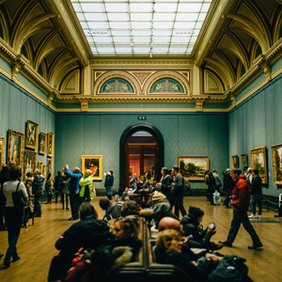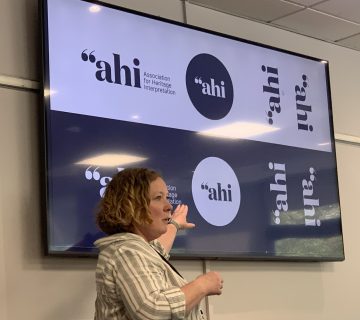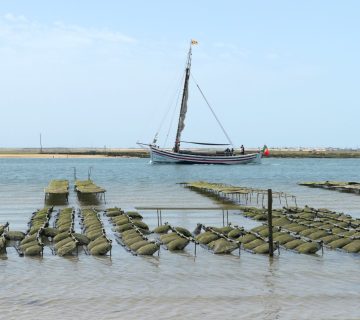Are you thinking about ways to better engage people with heritage? Then this article might be of interest to you. It offers some insights from the book, The Participatory Museum, by Nina Simon.
The book contains many interesting case studies and ideas and also a few theories in relation to participation in heritage interpretation. Our aim is not to provide an overview, but instead to focus on one challenge: how to encourage visitors to socially engage with each other around any content.
Simon distinguishes between five stages of interface between institution and visitors. From the point when an individual uses the content alone to the point where he/she steps into the exchange with others on different levels. In stage one (1) an individual consumes the content and an institution provides access to this content, like in static exhibitions. In stage two (2) the opportunity to try or touch things and ask questions is provided, for example mechanical interactions. In stage three (3) the visitor has a chance to also see other visitors’ actions and interests, for example the chance to select between options and see what others have selected. Stage four (4) helps visitors to connect with other visitors or staff to share the content or interests, for example if a visitor writes a letter and other visitors can read it. Stage five (5) being the most engaging level, offers numerous possibilities for exchange, collaboration and sharing in all directions: between institution and visitors, between visitors themselves, among residents living around heritage sites or stakeholders in heritage communities. The stages follow each other progressively, which means that stage five must contain all the previous stages. The best social experiences happen when an interaction continues after the facilitating activity has finished.
However, no matter how good stage five sounds, it is not realistic to assume it suits everyone. Some will just not feel comfortable to cross the second stage. The practice reveals that it is more difficult to provide social exchange with non-personal means when an individual is not willing or able to initiate the interaction themselves. Institutions could help by, for example, introducing ‘wearable identities’ that help to make the first contact between like-minded people around common interests. With experienced guides and other staff, however, we can more easily initiate communication in all directions, which can last after the facilitation stops.
Stepping out of the comfort zone and speaking up is not an easy task for the majority of people. Now the question is, how to make people comfortable enough to overcome the social barriers to participation? How to create a safe and appealing atmosphere, where people who dare to share opinions – even about sensitive subjects – will feel safe and respected?
The participatory approach contains elements of provocation and increases the intensity of first-hand experiences, which enable stronger cognition and long-term memory traces. Social exchange enables people to compare themselves to others, or to see clearer their role in society. The opportunity to share opinion could also grant a confirmation of their uniqueness or give a sense of belonging to a larger like-minded community. According to Interpret Europe’s recent study, Engaging citizens with Europe’s cultural heritage, interpretation has an opportunity to contribute to the social change for the better and social exchange in heritage settings seems like a convenient tool. In light of the issues in today’s European society, Simon’s book becomes very valuable reading.
Book Review: Simon, N., 2010. The Participatory Museum. Santa Cruz, California, Museum 2.0.
Helena Vičič from Slovenia is an IE Certified Interpretive Trainer (CIT) and heritage interpretation consultant. She studies interpretation at the University of the Highlands and Islands (UHI) in Scotland. She can be contacted at: helena.vicic@gmail.com




